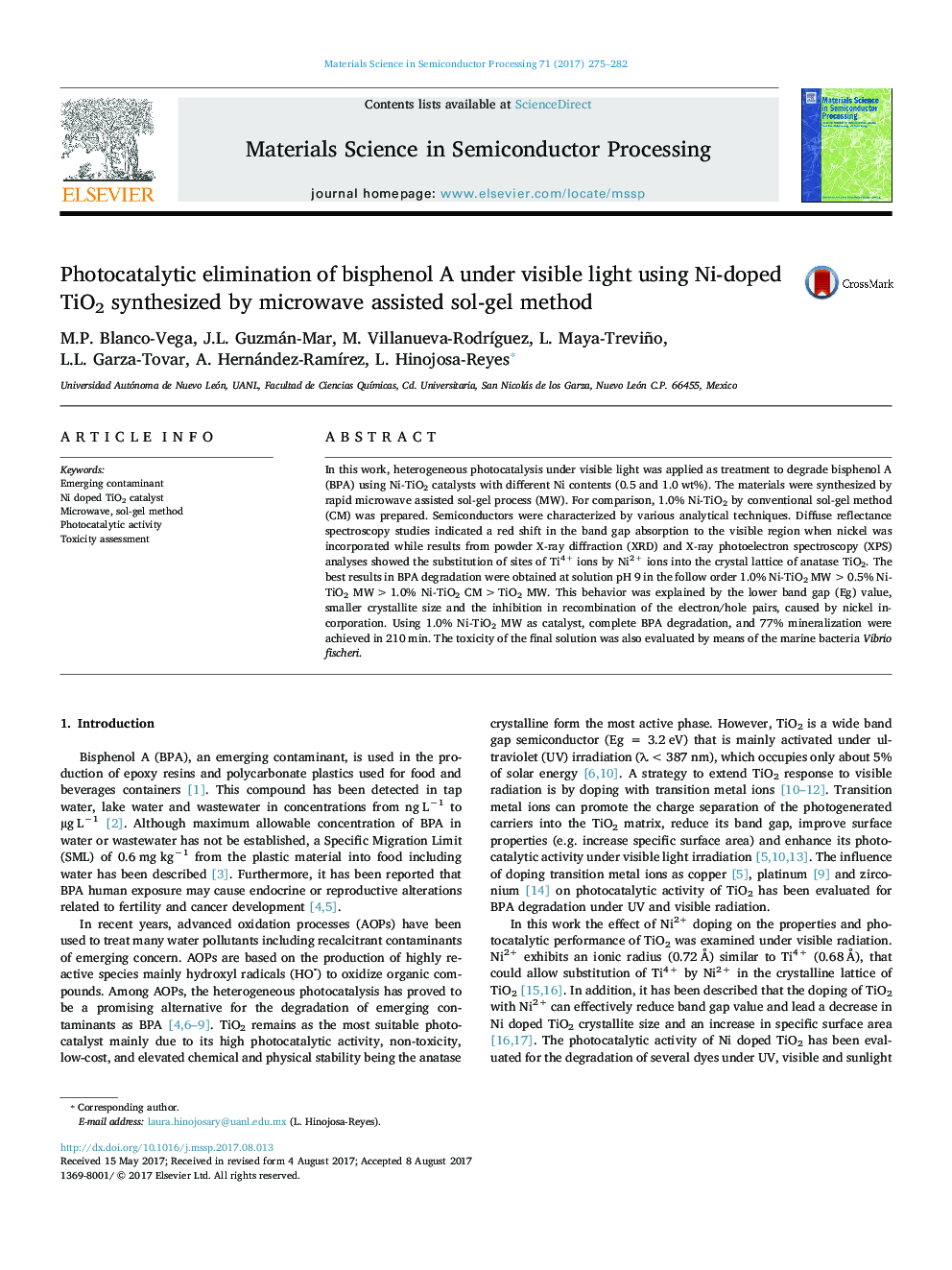| Article ID | Journal | Published Year | Pages | File Type |
|---|---|---|---|---|
| 5005834 | Materials Science in Semiconductor Processing | 2017 | 8 Pages |
Abstract
In this work, heterogeneous photocatalysis under visible light was applied as treatment to degrade bisphenol A (BPA) using Ni-TiO2 catalysts with different Ni contents (0.5 and 1.0Â wt%). The materials were synthesized by rapid microwave assisted sol-gel process (MW). For comparison, 1.0% Ni-TiO2 by conventional sol-gel method (CM) was prepared. Semiconductors were characterized by various analytical techniques. Diffuse reflectance spectroscopy studies indicated a red shift in the band gap absorption to the visible region when nickel was incorporated while results from powder X-ray diffraction (XRD) and X-ray photoelectron spectroscopy (XPS) analyses showed the substitution of sites of Ti4+ ions by Ni2+ ions into the crystal lattice of anatase TiO2. The best results in BPA degradation were obtained at solution pH 9 in the follow order 1.0% Ni-TiO2 MW > 0.5% Ni-TiO2 MW > 1.0% Ni-TiO2 CM > TiO2 MW. This behavior was explained by the lower band gap (Eg) value, smaller crystallite size and the inhibition in recombination of the electron/hole pairs, caused by nickel incorporation. Using 1.0% Ni-TiO2 MW as catalyst, complete BPA degradation, and 77% mineralization were achieved in 210Â min. The toxicity of the final solution was also evaluated by means of the marine bacteria Vibrio fischeri.
Related Topics
Physical Sciences and Engineering
Engineering
Electrical and Electronic Engineering
Authors
M.P. Blanco-Vega, J.L. Guzmán-Mar, M. Villanueva-RodrÃguez, L. Maya-Treviño, L.L. Garza-Tovar, A. Hernández-RamÃrez, L. Hinojosa-Reyes,
